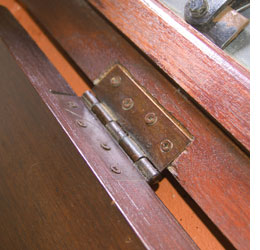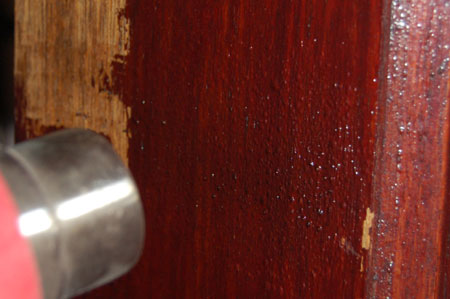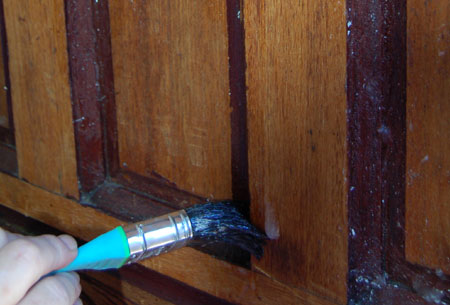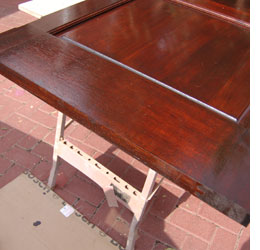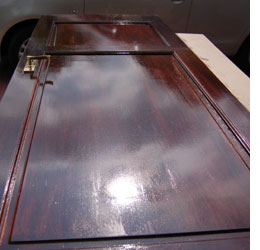Restore or makeover a front door
Strip off that old varnish and give your doors some Woodoc loving for the care and attention they deserve.
If you've ever heard me on the radio, you'll know that I am not a fan of varnish. All it does is clog up the surface of wood; drying out the timber, causing rot and eventually peeling, flaking or chipping off. As the first impression to your home, a front door needs to look gorgeous!
While varnish and sealer are similar in composition, sealer is of a much lower viscosity and is able to penetrate deep into the wood to moisturise and protect from within - rather like using moisturiser on your skin. Varnish, on the other hand is comparable to applying a thick layer of foundation over your skin. It sits on the surface, drying out your skin cells and causing damage. So give your doors some TLC and strip off that varnish.
HERE'S HOW:
1. Use a drill/driver and screw bit to remove the door from the door frame by removing the screws in the door hinges. It is far easier to work on the door once it has been removed. Place the door on a workbench in a well-ventilated area. If you are going to be using a chemical stripper to remove old paint, it is best to do this outdoors or in the garage.
2. There are two method for removing old paint or varnish, and you will most probably have to use both if your door has panels or decorative detailing.
The first method is to use a heat gun and paint scraper, preferably a plastic one so as not to scrape the surface of the door. A heat gun is ideal for removing varnish of more than one layer. It softens the varnish and makes it easier to scrape off. Don't have the heat gun too close or you will end up singeing the wood.
The second method for removing layered paint and varnish is to use an all-surface stripper. Do yourself and your environment a favour by using an eco-friendly stripper such as RemovAll, which you will find on the shelf at your local Builders Warehouse.
3. With the door off it's important to apply Woodoc exterior sealer to the bottom and top edges. This is where moisture normally has easy access to wooden doors. When installed, doors are only given one coat of protection and the rest is left up to you. With the door already fitted, we tend to overlook the fact that the bottom and top have not been sealed and this is why the door eventually goes black and starts to rot.
DIY Tip:
If doors have not been maintained and are starting to go black, use Woodoc Wood Reviver to treat black spots, kill any mould or fungus, and restore the wood before applying exterior sealer.
4. Beautifully restored and given a high-gloss shine, our new front door is ready to be screwed back into the frame. When using a Woodoc Exterior Sealer, do apply according to the instructions. Three coats are required, with a light sanding with Woodoc steel wool between the first and second coats, in order to provide the maximum protection.


